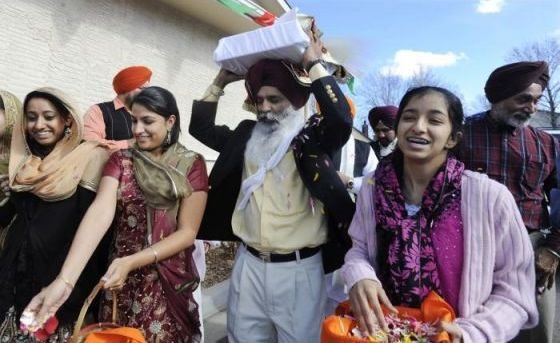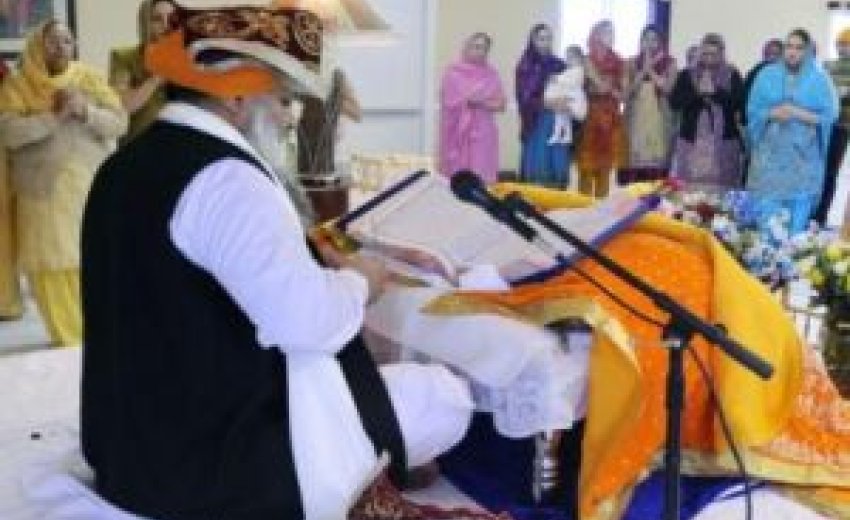 |
| The holy book of the Guru Ghar Sikh Temple is brought to its new home after 12 years of traveling from home to home for local services. In Sikh tradition, Kulvir Singh Chahal carries the book on his head during a procession as Kirn Badesha, left, and Serene Singh throw flower petals. It was the first service in the new temple building on Iron Horse Trail on Sunday. JERILEE BENNETT, THE GAZETTE |
The long, white hairs on Inderjit Singh Tulsi’s bearded face moved slowly as he began a prayer — one echoed by men in colorful turbans and head scarves.
The prayer was one Tulsi has recited every morning in his house as part of the Sikh religion.
On Sunday, it had a significance it never had before in Colorado Springs.
Hoisting the Sikh’s Guru of his head, Tulsi began a procession Sunday to awaken their written word and mark the opening of the first Sikh temple in the city.
“It is the greatest thing to happen to our religion here,” said Jas Grewal, a Colorado Springs businessman.
More than 100 people from across Colorado joined in the celebration at the new 'church'. They offered greetings of “Sat Sri Akaal” — “God is Truth” — before a feast of Indian food and traditional songs to honor the new temple.
The 10 Great Gurus founded Sikhism more than 500 years ago in the Punjab province of India, calling on its followers to praise one universal god. Sikhs often wear turbans out of respect for God as well as bracelets signifying God’s unbroken love.
For more than 10 years, Sikhs in Colorado Springs have either traveled to Denver on Sundays to worship or gathered in each others’ houses. But about a year ago, Sikhs in the city decided to raise money, purchase an abandoned Jehovah’s Witnesses church at 4330 Iron Horse Trail and convert it into a temple.
The conversion wasn’t extensive. Chairs were removed and white cloth was placed on the carpet, where everyone sits to promote equality. The main level of the temple is divided into two halves — one part serving as a fellowship area where food can be served to fellow worshippers and the surrounding community.
“This is what Sikh teaches — to give back to the community,” said Nitu Singh.
The other half is the worship area, where people sit on the floor, play instruments, sing and pray.
On Sunday morning, that temple was nearly ready for worship.
First, the congregation needed their holy book, the Guru Granth Sahib.
Carrying the holy book on top of his head, Tulsi walked out of one of the houses once used for worship.
Its next stop was Guru Ghar. In English, the temple’s name translates to “Guru’s home.”
Soon, Tulsi would lead the scores of people in a morning prayer, one where the elder would lead the congregation in proclaiming, “True is the Master, True is his Name, speak it with Love.”
But first, they threw flower petals in the air and placed the book on a lavish orange altar.
At that moment, the temple was ready for worship.
“It has a home, said a member of the congregation, referring to the holy book. “That’s the biggest thing.”
